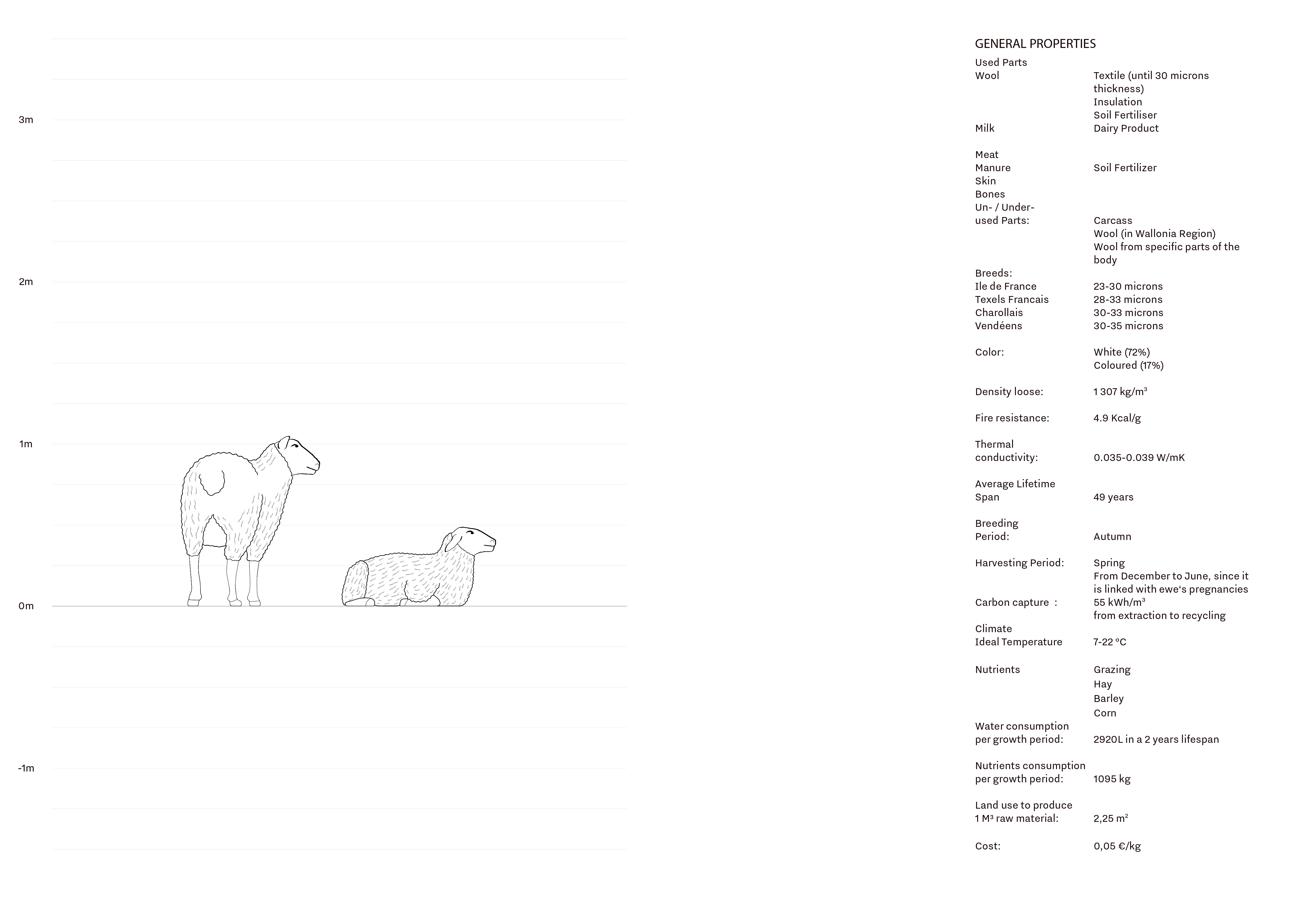Wool
Sheep have always been present on farms for their peculiar benefits. First of all, due to their grazing and their manure, they are able to maintain green and fertile fields. From a singular sheep there is a vast variet of products that can be exploited. Indeed, from just one head, it is possible to obtain 250 litres of milk every six month. Plus, every year 1-2 lambs per sheep are born. Additionally, sheeps need to be sheared at least once
a year, both for sanitary and health purposes. This means that wool is a material which results from bigger process, and it is up to the farmer, or external associations, to fully estimate its value. Wool usage in the textile industry is linked with strictly qualitative values. These need to be achieved both by the wool fiber itself, that depends on the breed, but also to the breeding quality of the sheeps itself. This means that a necessary education and the proper infrastructure are essential to ensure qualitative standards. In Wallonia, there are currently 49 784 sheeps, that are linked with meat production (90%) and smaller farming realities. Indeed, 30% of sheeps in the region are kept by breeders with fewer than 30 ewes. Moreover, only 44 farmers hold more than 200 heads. The amateur nature of the industry is linked with a series of consequences, that face the reality of enormous waste stream. Indeed, at the moment, in Wallonia, there is the possibility of producting 200 tonnes of raw wool and only 80 tonnes are being valorised.






